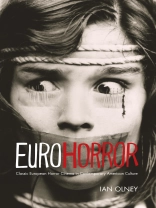Beginning in the 1950s, ‘Euro Horror’ movies materialized in astonishing numbers from Italy, Spain, and France and popped up in the US at rural drive-ins and urban grindhouse theaters such as those that once dotted New York’s Times Square. Gorier, sexier, and stranger than most American horror films of the time, they were embraced by hardcore fans and denounced by critics as the worst kind of cinematic trash. In this volume, Olney explores some of the most popular genres of Euro Horror cinema—including giallo films, named for the yellow covers of Italian pulp fiction, the S&M horror film, and cannibal and zombie films—and develops a theory that explains their renewed appeal to audiences today.
Table of Content
Preface
Acknowledgments
Note on Film Titles
Part 1. Toward a Performative Theory of Euro Horror Cinema
1. Academic Hot Spots and Blind Spots: Horror Film Studies and Euro Horror Cinema
2. Fast, Cheap, and Out of Control: The Academic Case against Euro Horror Cinema
3. Playing Dead, Take One: Euro Horror Film Production
4. Playing Dead, Take Two: Euro Horror Film Reception
5. Return of the Repressed: Euro Horror Cinema in Contemporary American Culture
Part 2. Case Studies in Euro Horror Cinema
6. Blood and Black Lace: The Giallo Film
7. The Whip and the Body: The S&M Horror Film
8. Cannibal Apocalypse: Cannibal and Zombie Films
Conclusion: From the Grindhouse to the Arthouse: The Legacy of Euro Horror Cinema
Works Cited
Index
About the author
Ian Olney is Associate Professor of English at York College of Pennsylvania, where he teaches film studies. His publications on European cinema and horror film include articles in Quarterly Review of Film and Video and Literature/Film Quarterly.












